Day One: Commuter Chaos in New York
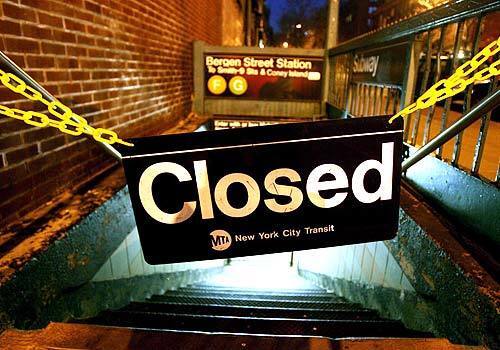
One word says it all at a Brooklyn subway station: New York City mass transit shuts down. (Justin Lane / EPA)
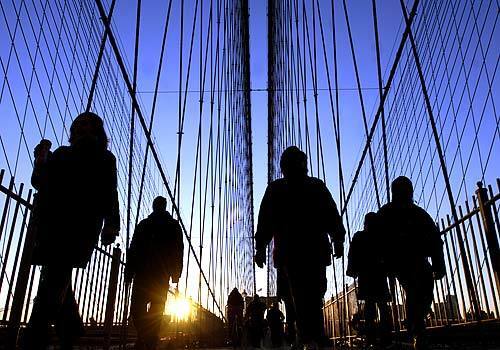
Walk to Work: Commuters brave the biting cold at dawn to cross the Brooklyn Bridge into Manhattan. (Jason DeCrow / AP)
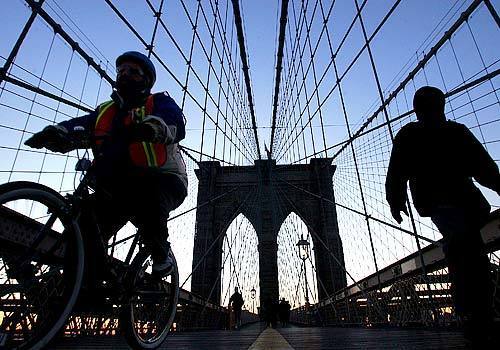
Commuters hike and bike across the Brooklyn Bridge before sunrise, adding to New York City’s newest form of bottlenecking -- foot traffic on bridges and streets throughout the boroughs. (Mario Tama / Getty Images)
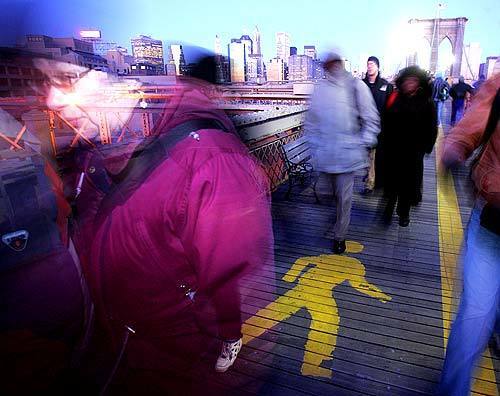
Breeze On, Breeze Off: Commuters fight the cold as they bolt across the Brooklyn Bridge into work. (Dima Gavrysh / AP)
Advertisement
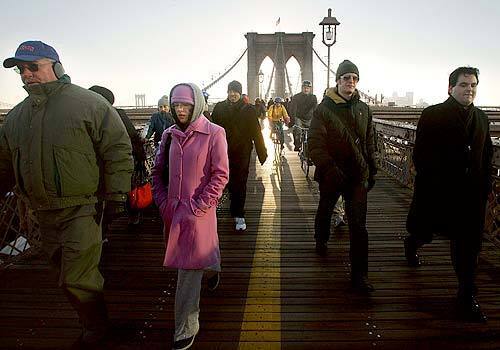
Morning “rush-hour” finds commuters walking across the Brooklyn Bridge in New York City. (Mario Tama / Getty Images)
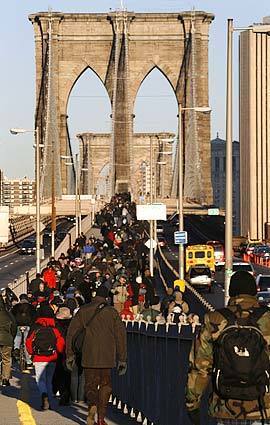
Brooklyn Bridge became less picturesque and more practical for workers looking for an alternative route into Manhattan. (Carlolyn Cole / LAT)
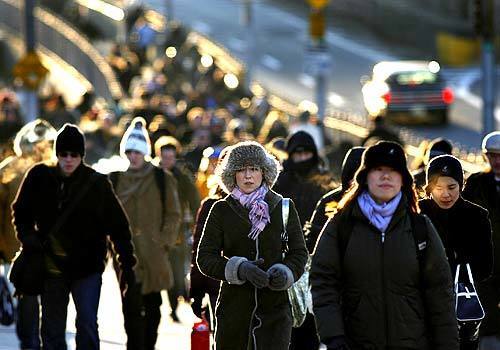
Thousands of New York commuters endured temperatures in the 20s as they walked or biked to work. (Carlolyn Cole / LAT)
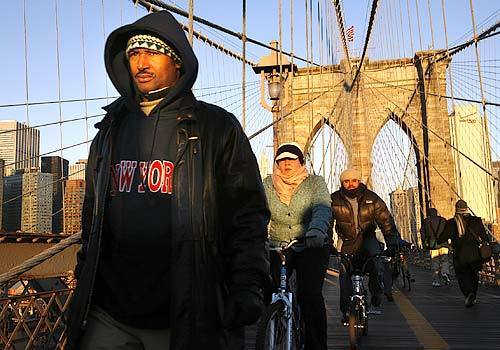
New York’s Brooklyn Bridge became an avenue for many commuters forced to walk to work after the transit workers union went on strike Tuesday. (Carlolyn Cole / LAT)
Advertisement
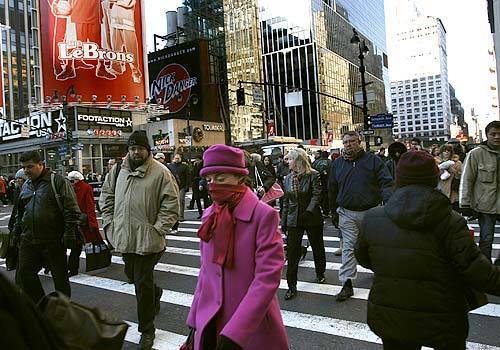
Outside New York’s Penn Station, commuters able to take the train into the city merged onto already crowded sidewalks. (Carlolyn Cole / LAT)
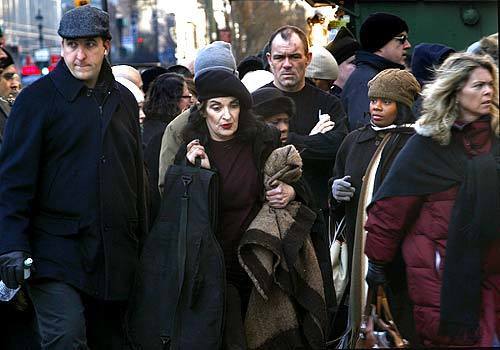
A crush of people on the sidewalk greeted commuters outside New York’s Penn Station where some commuters were able to take the train into the city. (Carlolyn Cole / LAT)
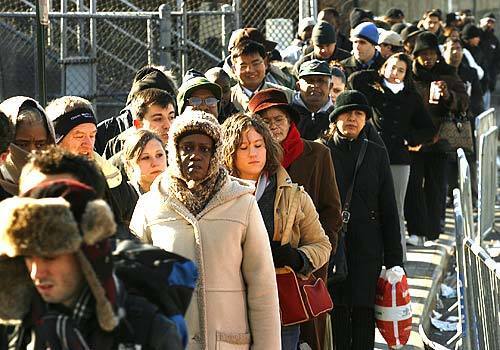
Commuters at Jamaica Station in Queens wait to buy tickets on the Long Island Rail Road to Manhattan. (Carlolyn Cole / LAT)
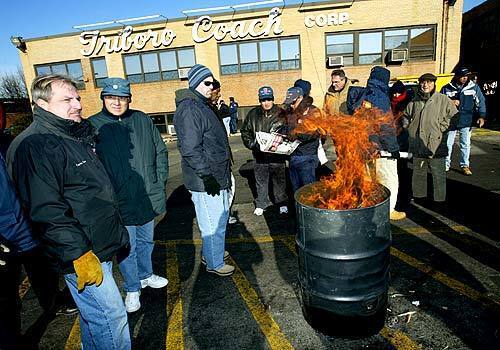
Striking transit workers warm themselves as they protest outside a bus terminal in New York’s Elmhurst neighborhood. (Anthony Correia / Getty Images)
Advertisement
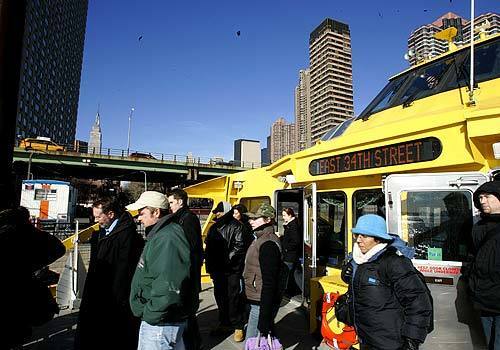
Patrons exit a water taxi from the Queens borough of New York at East 34th Street in Manhattan. Subways and buses ground to a halt as transit workers walked off the job at the height of the holiday shopping and tourist season, forcing millions of riders to find new ways to get around. (Frank Franklin II / AP)
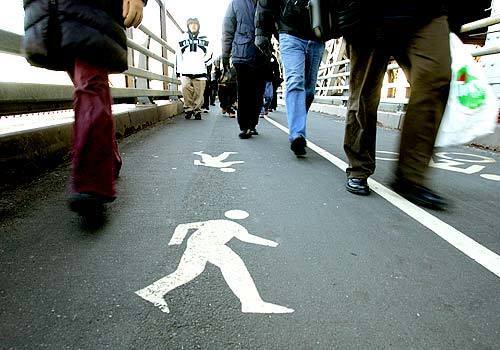
Commuters make their way across the Queensboro Bridge on foot in New York City after more than 30,000 New York City transit workers went on strike, shutting down nation’s largest public transit system. (Daniel Barry / Getty Images)
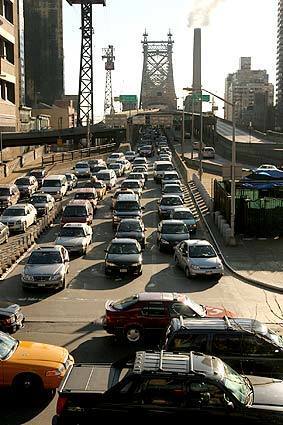
Traffic flows into Manhattan off the Queensboro Bridge in New York City. (Daniel Barry / Getty Images)
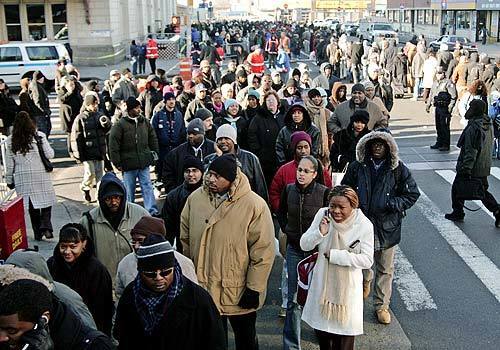
Commuters line the streets in front of a Long Island Rail Road station in the Jamaica section of the Queens borough of New York after New York City transit workers went on strike. (Ed Betz / AP)
Advertisement
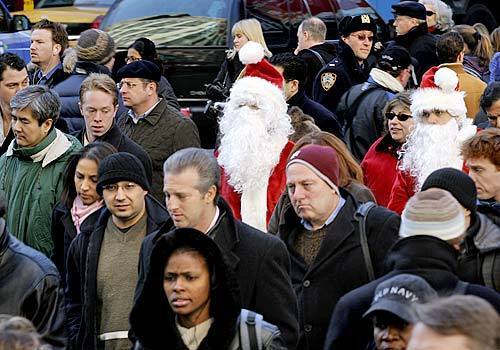
New York City commuters, including two Santas, cross a midtown intersection after transit workers walked off the job following days of acrimonious labor talks, forcing more than 7 million daily riders to find new ways to get around. (Mark Lennihan / AP)
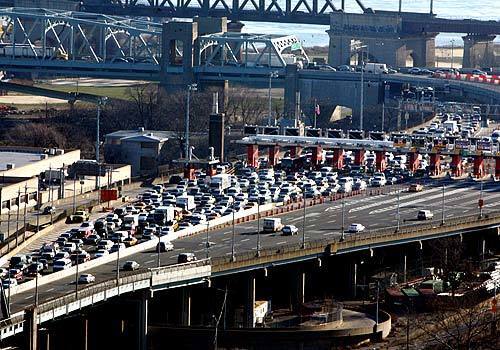
Manhattan-bound traffic on the Triborough Bridge is at a standstill. (Mary Altaffer / AP)
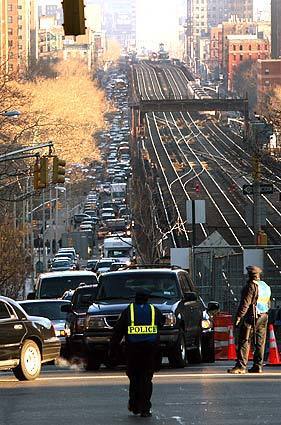
New York City Police Officers direct traffic at a checkpoint on Park Avenue and 96th Street. Cars entering Manhattan below 96th Street between 5 a.m. and 11 a.m. must carry four or more passengers. (Travis Lindquist / Getty Images)
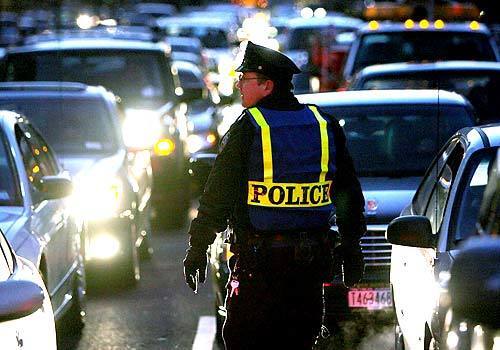
A New York City police officer checks for the four-passenger rule in cars approaching the Brooklyn Bridge. (Justin Lane / EPA)
Advertisement
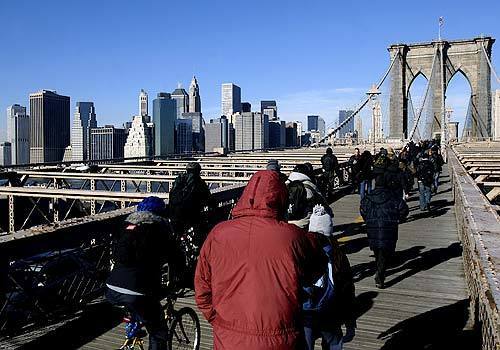
With buses and trains out of circulation in the nation’s largest transit system, New Yorkers trek to work. Here, foot traffic clogs the Brooklyn Bridge during the morning commute. (Jason DeCrow / AP)



